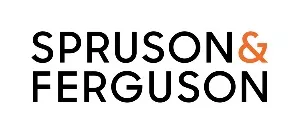The patent community has waited with bated breath for the US Supreme Court to hand down its ruling in relation to what should and should not be patentable. Would business methods survive? What about software? Would medical diagnostic methods get a reprieve? Well, the wait is now over.
In a nutshell, the Supreme Court saw it inappropriate to read into the legislation any implicit limitations on what should and should not be patentable. The general position is that, provided an invention is not simply an "abstract idea", it should not be excluded from patentability simply because it is not limited to a machine or article.
Accordingly, the recent decision provides a great sense of relief to those with a vested interest in validity of patents for computer systems, software and diagnostic methods. And those with views aligned more at the "open source" end of the spectrum will not have been so impressed.
General Context
In 2008, a US patent application for a risk management method became the focus of much attention. Following rejection of the application by the US Patent Office Board of Appeals, the US Court of Appeals for the Federal Circuit (CAFC), of its own accord, initiated the an en banc action, popularly known as the Bilski case, to more fully explore the issues of business method patentability.
Following the CAFC decision in Bilski, the accepted test for determining whether or not an invention constitutes patentable subject matter is a "machine-or-transformation" test. Based on that test, a process is only patentable where one of the following applies:
(i) The method is tied to a particular machine or apparatus.
(ii) The method transforms a particular article into a different state or thing.
Furthermore, under this test, the use of a machine, or the presence of a transformation, must impose meaningful limits on the scope of a clam to impart patent eligibility.
The Bilski case then passed for consideration by the Supreme Court, being the highest judicial authority in the US.
Overview of Supreme Court Decision
The Supreme Court, in considering Bilski, in essence overruled the "machine-or-transformation" test. Although the Court acknowledged that passing such a test is excellent evidence of patentability, it was found that failing to pass such a test is by no means fatal to patentability.
In preference to the now defunct "machine-or-transformation" test, the Supreme Court took a step back, and a step closer to the word of the law, by focussing on the non-patentability of "abstract ideas".
In support of the Supreme Court decision, there are specific provisions in the US patent legislation that exclude the patentability of such abstract ideas. On the other hand, there are no provisions which even hint towards the exclusion from patentability of so called "business methods". Accordingly, there is no basis for a broad-brush exclusion of such methods.
The Supreme Court decision in this manner provides a great sense of relief to those with a vested interest in validity of patents for technologies popularly regarded as being "above" business methods, such as computer systems, software and diagnostic methods.
As for business methods, although the title of this article might suggest otherwise, the floodgates have not swung all the way open. Indeed, the Bilski patent was again found to be invalid for its abstract nature. The exclusion of "abstract ideas" will continue to prevent some forms of business method from being patentable, for example those characterised by a number of steps that, when performed in combination, achieve a goal or status that is not able to be characterised in a physical sense. Common examples include risk management methods and asset protection methods.
Looking Ahead
The Supreme Court decision in Bilski has been subjected to criticism by a number of commentators. For example, there is a perceived flaw in the sense that the meaning of "abstract" has not been adequately explained. However, it appears clear that questions of subject matter eligibility will play a lesser role in examination and litigation.
It is difficult to predict how the Supreme Court decision will impact on other jurisdictions. For example, the Australian Patent Office policy made some efforts to tighten patentability thresholds after the CAFC Bilski decision. It is by no means certain (or perhaps even likely) that the reversal of that decision will see a reversal in Australian policy. Ultimately, that may be a moot point, as the Australian case law remains unchanged, and so the ultimate position remains favourable to those seeking protection for business methods, software, and the like.
The position on what constitutes patentable subject matter, whilst seemingly settled in the short term in the US at least, will continue to develop differently between jurisdictional boundaries. It is possible to deal with the associated risks through the active and careful development of a patent portfolio. And, of course, that is something with which Shelston IP is well placed to assist.
The content of this article is intended to provide a general guide to the subject matter. Specialist advice should be sought about your specific circumstances.

